Alaska is a very large state with a rich history in terms of human settlements and prehistoric creatures. This state was home to woolly mammoths and giant marine reptiles like Megalneusaurus, but dinosaurs also roamed this vast area. Today, we will explore seven different dinosaurs that lived in Alaska. We’ll talk about what types of creatures they were, what fossil evidence exists, and where you can see those fossils in the state.
Before we get started counting down the seven dinosaurs, let’s look at the state dinosaur for Alaska.

Does Alaska Have A State Dinosaur?
Alas, Alaska does not have a state dinosaur, but it does have a state fossil. Mammuthus primigenius, better known as the woolly mammoth, is the state fossil of Alaska. Paleontologists believe this species originated in eastern Asia before migrating across the land bridge to North America.
This species lived in Alaska for thousands of years, and it’s believed that they only went extinct about 10,000 to 12,000 years ago. Several great woolly mammoth fossil specimens have been recovered throughout the state. Sometimes, they are located by citizens with no training, only good luck and awareness to recognize animal bones when they see them.

The woolly mammoth is the state fossil of Alaska.
©Dotted Yeti/Shutterstock.com
What Are The 7 Dinosaurs That Lived In Alaska?
Many species of dinosaurs lived in Alaska. Some of them left behind more fossil evidence than others, though. While scientists have identified some species of dinosaurs based on their fossils, some species are only recognized according to their genus. In those cases, we’ll tell you about the genus in general along with the evidence that paleontologists found of these creatures.
With that said, let’s start looking at some dinosaurs from the last frontier!
1. Alaskacephale gangloffi
The Alaskacephale gangloffi was a small or medium-sized herbivore. The creature’s name obviously comes from Alaska, the state in which it was discovered. These creatures were usually about 3 feet tall at their hips, weighed up to 150 pounds, and had a head-to-tail length of 8 feet.
These creatures are famous for their thick, dome-shaped skulls that they could have used for showing off or fighting. Fragments of the dinosaur’s skull were found with features that let scientists identify this species.
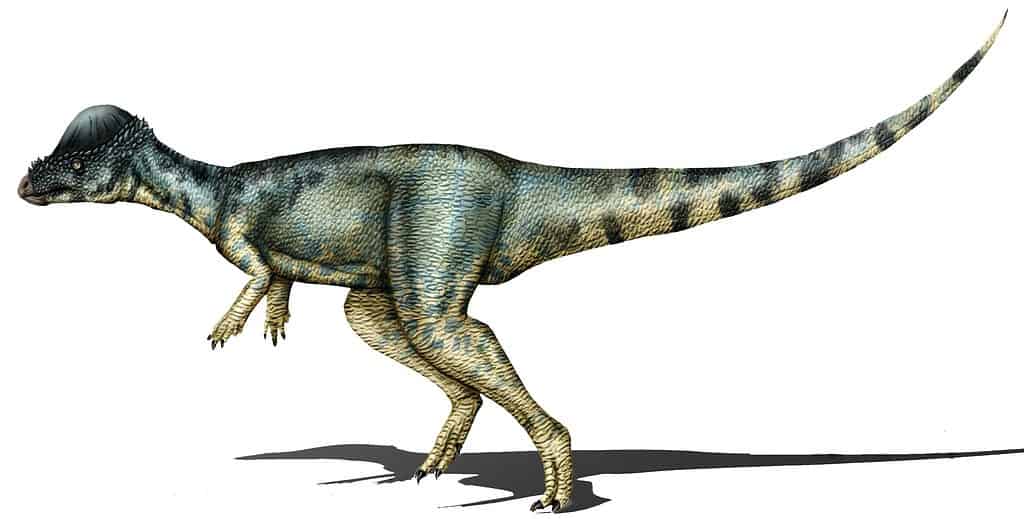
, named after Alaska where they were discovered, is known for their thick, dome-shaped skulls.
©Karkemish, CC BY-SA 3.0 <https://creativecommons.org/licenses/by-sa/3.0>, via Wikimedia Commons – License
2. Nanuqsaurus hoglundi
Nanuqsaurus hoglundi was a theropod that lived in Alaska. In fact, they were arguably the largest of the theropods in the state. You may recall that T. rex was a theropod, and Nanuqsaurus was certainly a tyrannosaurid as well as a carnivore.
This large creature is known for having a shaped ridge on its head and small arms. This species may have grown about 20 feet long including its tail. The evidence of this dinosaur includes backbones, skull fragments, and teeth.

was a large theropod with a shaped ridge on its head and small arms.
©Nobu Tamura email:[email protected] http://spinops.blogspot.com/, CC BY-SA 4.0 <https://creativecommons.org/licenses/by-sa/4.0>, via Wikimedia Commons – License
3. Ugrunaaluk kuukpikensis
The Ugrunaaluk kuupikensis was a hadrosaurid, one of the duck-billed dinosaurs that lived in Alaska. These creatures may have been bipedal or quadrupedal or a combination of both. We do know that they were herbivores that lived roughly 70 million years ago.
Paleontologists have recovered thousands of bones and bone fragment samples in Alaska. One interesting side note is that many of the fossils belonged to juvenile members of this species rather than adults.
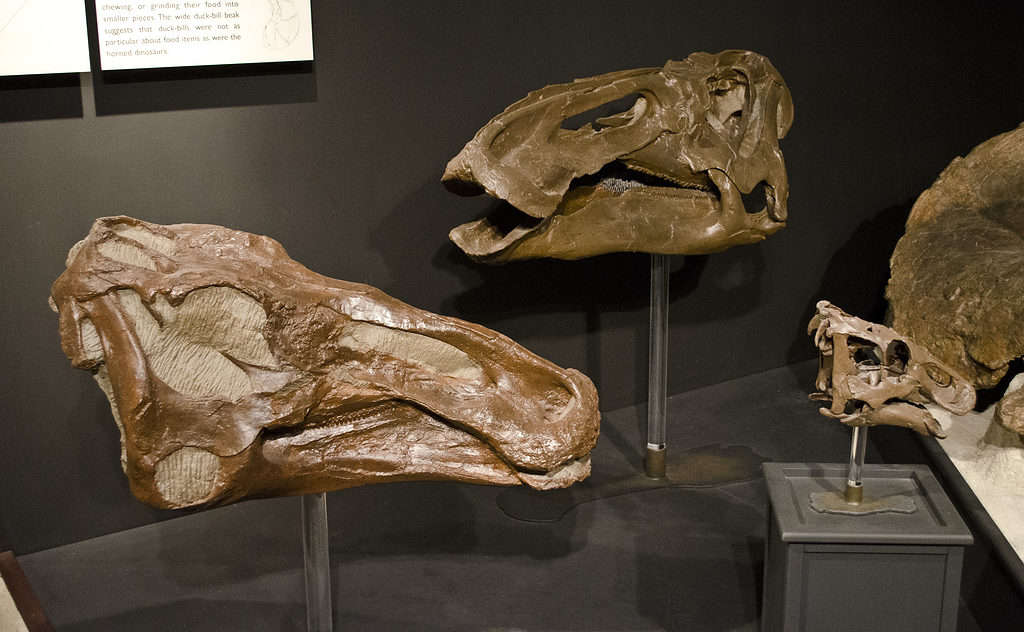
Paleontologists have recovered thousands of bones and bone fragment samples of
Ugrunaaluk kuupikensisin Alaska.
©Tim Evanson, CC BY-SA 2.0, via Wikimedia Commons – License
4. Albertosaurus (Potentially)
Albertosaurus was first found in and named for Alberta, Canada. This bipedal theropod was an apex predator and a relative of the T. rex. Paleontologists recovered fossils that could not be definitively identified as Albertosaurus, however scientists remarked that the remains were albertosaurine.
These fossils may have come from Albertosaurus or another dinosaur entirely. All we know is that another large theropod once lived in the area. If the fossils are confirmed to be from that dinosaur, the Albertosaurus may have been the largest in the state!
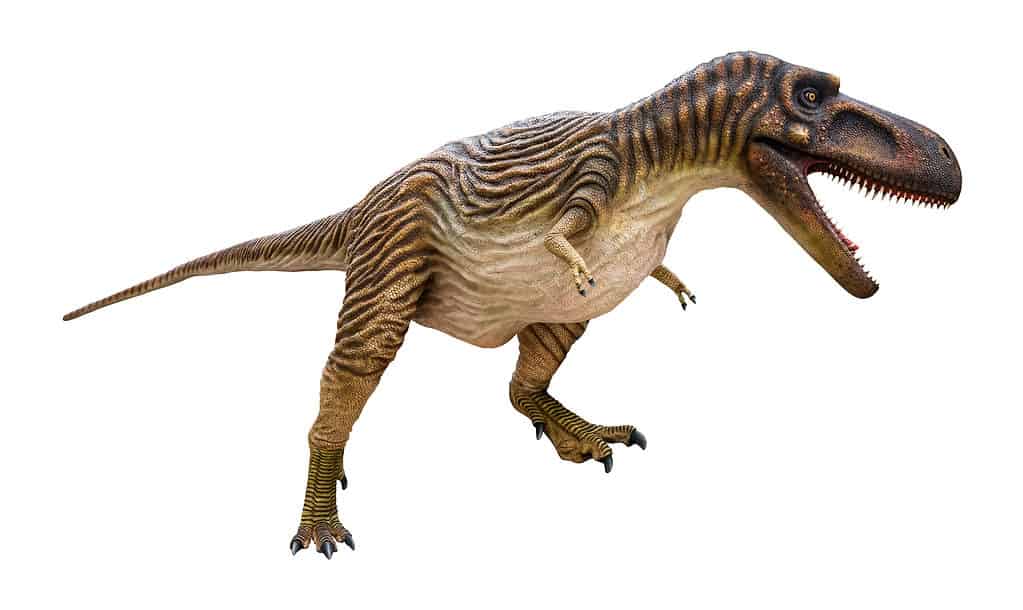
Paleontologists recovered fossils in Alaska that may have been
Albertosaurusbut could not be definitively identified.
©YuRi Photolife/Shutterstock.com
5. Unidentified Dromaeosaurid
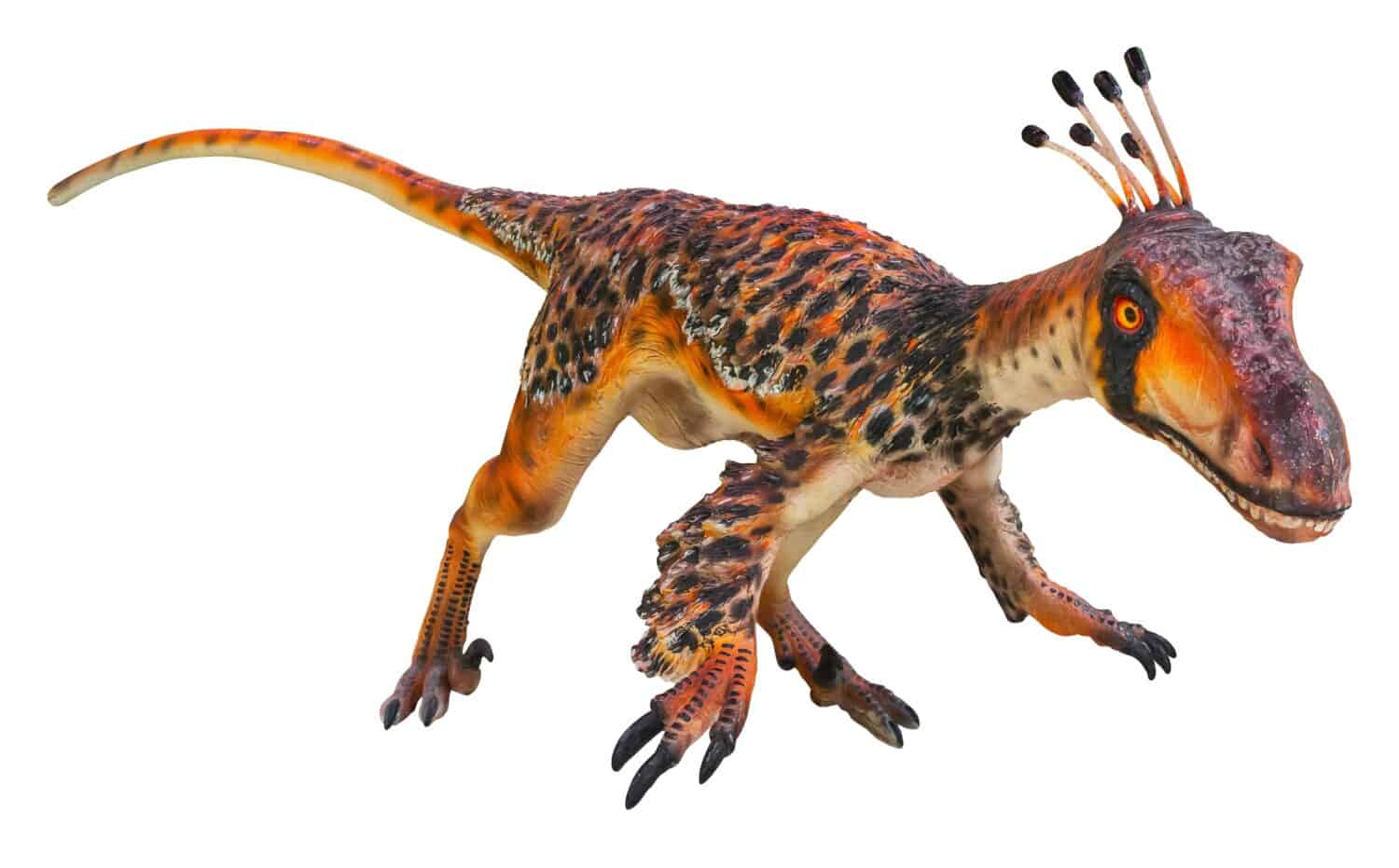
The Dromaeosaurid that lived in Alaska could have looked something like this one.
©YuRi Photolife/Shutterstock.com
Dromaeosaurids were small-to-medium-sized dinosaurs known for their swiftness and potentially feathered appearance. Paleontologists recovered teeth belonging to one of the members of the Dromaoesaurus, but they don’t know which one. Still, these isolated teeth findings are interesting and show the diversity of dinosaurs that lived in Alaska.
6. Pachyrhinosaurus perotorum
Pachyrhinosaurus perotorum was a large ceratopsid dinosaur that roamed Alaska. These quadrupedal herbivores could grow 7 feet tall at the shoulder and measure up to 18 feet long. They could weigh as much as four tons!
This particular dinosaur lacked the large horns of other members of the family, but it still had bony bosses above its eyes and around its snout. Scientists located pieces of this dinosaur’s skull, back, and legs.

was a large ceratopsid dinosaur that once roamed Alaska.
©bryan… from Taipei, Taiwan, CC BY-SA 2.0 <https://creativecommons.org/licenses/by-sa/2.0>, via Wikimedia Commons – License
7. Troodon formosus
Lastly, we have Troodon formosus, another bipedal carnivore. This creature was smaller than most other theropods. They weighed between 100 and 200 pounds and could stand 4 feet high at the hips. Also, they measured 8 feet long from nose to tail. They weren’t the largest dinosaurs, but they were large enough to hunt other animals.
Evidence of Troodon’s existence in Alaska comes from skull fragments as well as their teeth. Their teeth are one of their most identifiable features due to the unique serrations on the front as well as the back of their teeth.
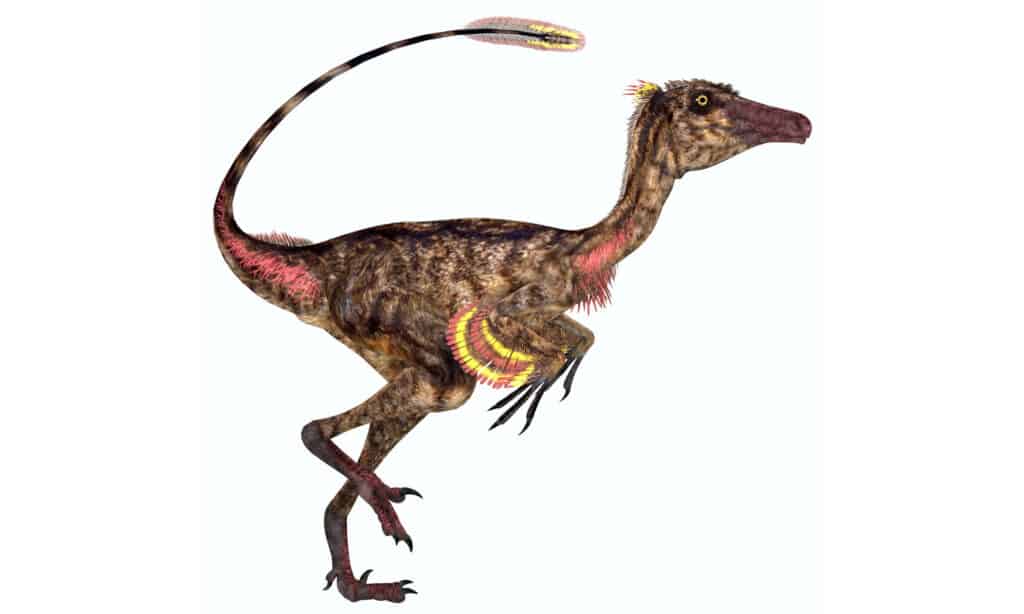
Troodon dinosaurs were relatively small and had serrated teeth.
©iStock.com/CoreyFord
Where Can You See Dinosaur Fossils In Alaska?
Even though Alaska is a large state with a relatively small population, it is home to some high-quality museums and exhibits.
The University of Alaska’s Museum of the North is a great place to see exhibits dedicated to Alaskan culture and prehistoric creatures. In the past, they have had some exhibits featuring dinosaurs and dinosaur fossils, but they don’t appear to run all year long. Call or visit their website to learn more about the opportunities you’ll have to see fossils from Alaska.
The other place you can visit to see fossils is the Alaska Museum of Science & Nature. This museum has an exhibit called Dinosaurs of Darkness that allows people to get up close with skeletons and reproductions of dinosaurs that roamed the area as well as various teeth, bones, claws, and more. This is the perfect place to learn more about the dinosaurs that lived in Alaska.
Always make sure to check with the museums to see what access you can get to their materials before you arrive!
Summary Of The 7 Dinosaurs That Lived In Alaska
| Rank | Dinosaur |
|---|---|
| 1 | Alaskacephale gangloffi |
| 2 | Nanuqsaurus hoglundi |
| 3 | Ugrunaaluk kuukpikensis |
| 4 | Albertosaurus (Potentially) |
| 5 | Unidentified Dromaeosaurid |
| 6 | Pachyrhinosaurus perotorum |
| 7 | Troodon formosus |
The photo featured at the top of this post is © Karen Carr, CC BY 2.5
Sources
- U.S. Department of the Interior Bureau of Land Management, Available here: https://www.blm.gov/sites/default/files/documents/files/PublicRoom_AK_Dinosaurs-on-NorthSlope_booklet_2018.pdf
- The Great State of Alaska Department of Natural Resources Geological & Geographical Surveys, Available here: https://dggs.alaska.gov/popular-geology/kids/state-mineral.html#:~:text=The%20Woolly%20Mammoth%20is%20Alaska's%20state%20fossil.
- Currie, P.J. 2003. Cranial anatomy of tyrannosaurid dinosaurs from the Late Cretaceous of Alberta, Canada. Acta Palaeontologica Polonica 48 (2): 191–226, Available here: https://app.pan.pl/archive/published/app48/app48-191.pdf
Thank you for reading! Have some feedback for us? Contact the AZ Animals editorial team.






